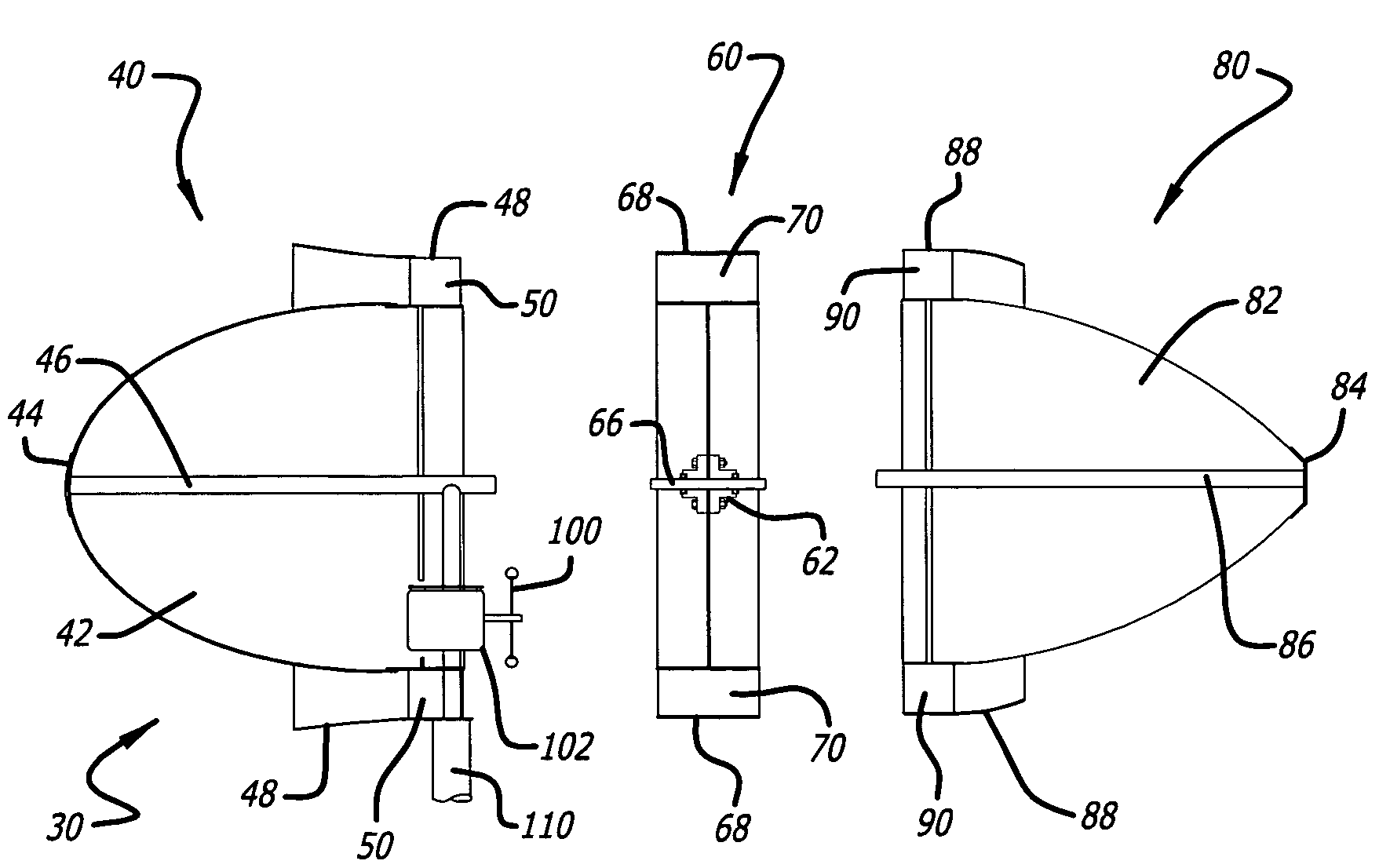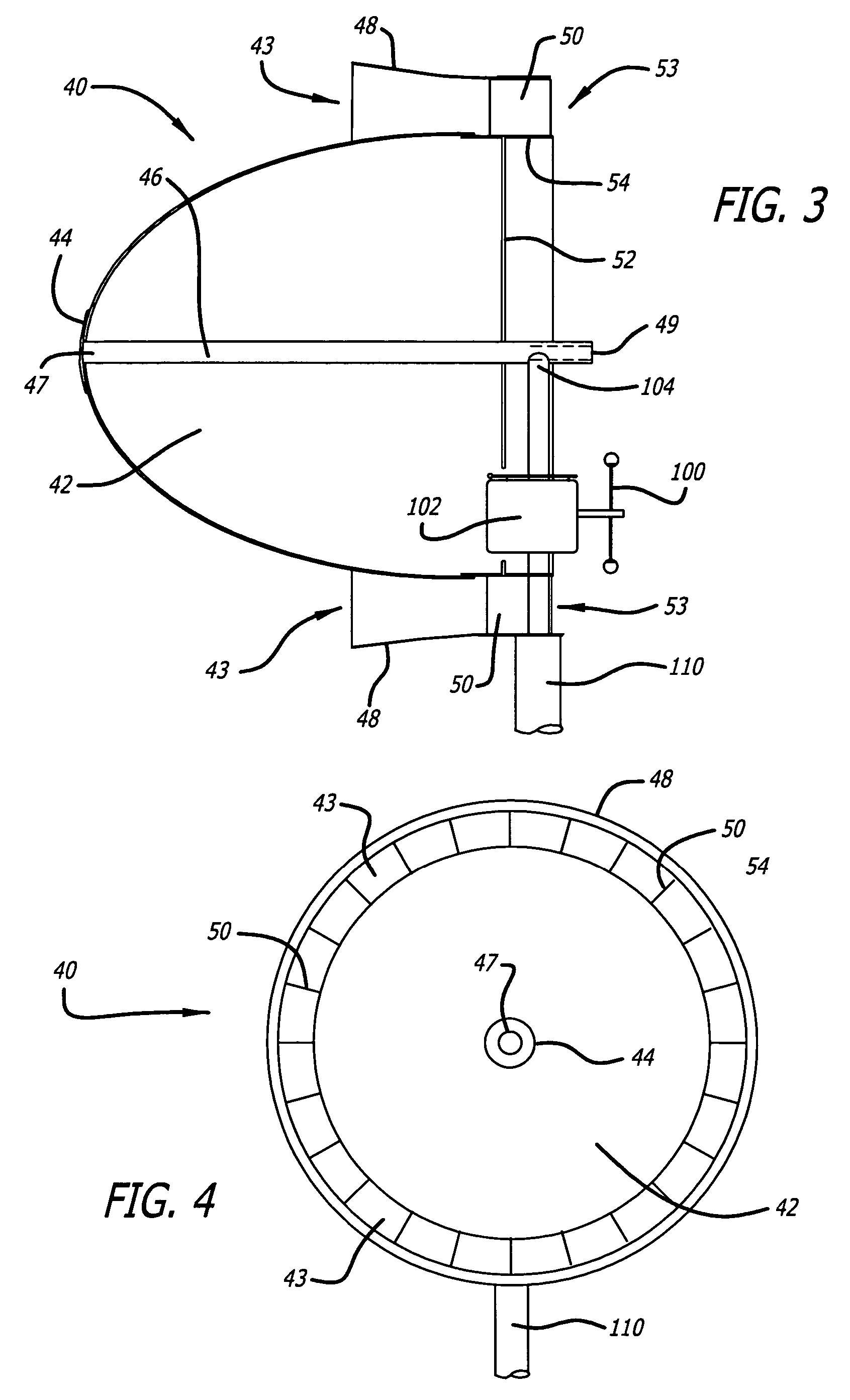Laminar air turbine
a technology of laminar air turbines and wind turbines, which is applied in the direction of machines/engines, stators, liquid fuel engines, etc., can solve the problems of ineffective utilization of wind energy, inability to achieve optimal output for the full dynamic range of fluctuating winds, and limitations of conventional design approaches, etc., to achieve the effect of maximizing the rotational force, generating power, and low cos
- Summary
- Abstract
- Description
- Claims
- Application Information
AI Technical Summary
Benefits of technology
Problems solved by technology
Method used
Image
Examples
Embodiment Construction
[0031]The present invention is directed to a minimum drag, streamlined body-of-revolution having a rounded nose and tapered tail halves that are separated for the insertion of one or more rows of turbine wheels. The present invention inserts one or more rows of ducted turbine wheels between the low-drag nose and tail halves to capture that accelerated laminar wind close to the body and to send that accelerated wind through the turbine blades to generate electricity. In principle, the less a wind stream is disturbed as it passes a stationary body the lower its wind drag force will be. A streamlined body-of-revolution achieves the lowest drag by separating the wind at the rounded nose, causing it to accelerate around the body in a smooth laminar fashion so as to merge at the tail with the surrounding wind, with minimum induced turbulence. The subject windmill can be described as a low drag, streamlined body in which the accelerated laminar air surrounding the body is captured for its ...
PUM
 Login to View More
Login to View More Abstract
Description
Claims
Application Information
 Login to View More
Login to View More - R&D
- Intellectual Property
- Life Sciences
- Materials
- Tech Scout
- Unparalleled Data Quality
- Higher Quality Content
- 60% Fewer Hallucinations
Browse by: Latest US Patents, China's latest patents, Technical Efficacy Thesaurus, Application Domain, Technology Topic, Popular Technical Reports.
© 2025 PatSnap. All rights reserved.Legal|Privacy policy|Modern Slavery Act Transparency Statement|Sitemap|About US| Contact US: help@patsnap.com



